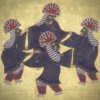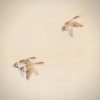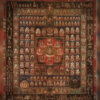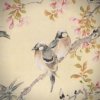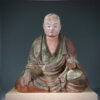Nonagase Banka: Japanese Painter Who Was Active Mainly in the “Kokuten” Exhibition

Nonagase Banka was born in 1889 in Wakayama prefecture. After graduating the local elementary school, he went to Osaka and entered Nakagawa Rogetsu school. Then, he went to Kyōto and studied under Taniguchi Kōkyō. In 1909, he entered the newly established Kyōto-shiritsu Kaiga Senmon Gakkō (the Kyōto City Specialist School of Painting), but from the second year he hardly attended the school and he dropped out. He established Kokuga Sōsaku Kyōkai with his fellow students at the time in 1918. Kokuga Sōsaku Kyōkai was an organization formed in 1918, aiming for “the fusion of Western and Oriental art and creating new Japanese painting”. The organization was made by Irie Hakō, Ono Chikkyō, Sakakibara Shihō, Tsuchida Bakusen, Nonagase Banka, and Murakami Kagaku, Japanese painters living in Kyōto who were dissatisfied with the traditional judgement of the Bunten. The exhibition held by the organization was called “Kokuten”. Until then, Nonagase Banka was barely known as a painter. However, since the characteristic of Kokuten matched Banka’s uniqueness, he was active with his personality in the era of Kokuten. This era was probably the most fulfilling period for the painting history of Banka. Banka’s name became known to the world along with the name of Kokuga Sōsaku Kyōkai. At the same time, his unprecedented and unbridled paintings, which were not bounded by the tradition, were seen by people and impressed them. “Shoka no Nagare ” presented at the first Kokuten attracted attention due to its intense colors and bold theme. There were some people questioning whether this painting was a Japanese painting. He was by no means a skilled painter, nor was he the type of painter with a sparkling talent. His innocence towards Japanese painting became his personality, taste, and gave off a strange glow in the Kokuten. As the Kokuten were held over and over, he gradually added the primitive colors to his works. After Kokuten was disbanded, he did not exhibit at any public exhibition and started drawing alone. He was a painter who you may call “the child of Kokuten”. In 1964, he quietly died when he was 74-year-old.

